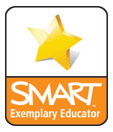2010 is a year of hopes, more than the current one. I don’t remember most of my expectations this same day a year before, I’m sure they were important but I just can’t remember them. The only one I remember is that I wanted to go back to university, as a student.

I guess I was lucky and fortunate at the same time. My family has been a tremendous incentive in my new educational stage. My two kids know when I’ll get home late, and they come to the lab and visit me during their recess time, I work at the school where they study. that gave me a different connection, something that didn’t happen before. We talk about the university classes, and I included them in one of my last presentations when i prepared a video of a moment of creativity.
One of them is more into the plastic arts, the other is more into high tech. He downloads games, and chats since he was 5. He handles electronic devices by intuition and my wife requires his assistance to change the ring tone of her cell phone. Does that sound familiar? Digital Native vs Digital immigrant?
We were planning to go camping for 4 days to celebrate the new year, but my friend (the organizer) had to be taken to the ER due to intense chest pain. He was diagnosed with Angina Pectoris, a sign that you might get a heart attack (Click here to see an animation). I saw him yesterday after staying overnight in the ER. He has to take it slow, and so do I. Apart from the fact that the camping with the kids had to be rearranged, it made me think very seriously about myself.
I’ll turn 35 by the end of February, I’ve had that number in my mind for quite some time. That is the mark where I was supposed to start living a serious and organized healthy lifestyle. I guess I’ll have to stick to that deadline, because I don’t want the dead line.
For the rest, I’m very compromised to finish university and pursue a new turn in my career, and the events for the coming year will tell in what direction that turn will be.
Happy New 2010!












 Several months ago I recieved an email from somebody, the message included a link to a geek test. I took it, out of curiosity. It turns out I didn’t qualify as a real geek, even though I spend several hours a day in front of a computer. But I guess being a computer geek is more a lifestyle that a job description. Although if we watch the british sitcom
Several months ago I recieved an email from somebody, the message included a link to a geek test. I took it, out of curiosity. It turns out I didn’t qualify as a real geek, even though I spend several hours a day in front of a computer. But I guess being a computer geek is more a lifestyle that a job description. Although if we watch the british sitcom 


![Reblog this post [with Zemanta]](http://img.zemanta.com/reblog_e.png?x-id=5040f3fe-9600-46fe-aae0-66e5c2e40368)


![Reblog this post [with Zemanta]](http://img.zemanta.com/reblog_e.png?x-id=ff866b25-6441-407a-9852-c7c6d9e35ad4)

![Reblog this post [with Zemanta]](http://img.zemanta.com/reblog_e.png?x-id=beaf471a-2f03-4366-89b7-89a848c0cc99)


![Reblog this post [with Zemanta]](http://img.zemanta.com/reblog_e.png?x-id=fe71a80b-f814-4302-b6db-b043f4be529e)

![Reblog this post [with Zemanta]](http://img.zemanta.com/reblog_e.png?x-id=44ec4567-01f0-48b0-a886-87e834cc115a)
![Reblog this post [with Zemanta]](http://img.zemanta.com/reblog_e.png?x-id=2ac24c2b-7e3d-48dc-ba09-cd7c7af5107f)





 Linkedin/glazaro
Linkedin/glazaro Twitter/glazaro
Twitter/glazaro YouTube/sjtics
YouTube/sjtics Del.icio.us/glazaro
Del.icio.us/glazaro Technorati/glazaro
Technorati/glazaro MyBlogLog/glazaro
MyBlogLog/glazaro Blog/Gerardo Lazaro
Blog/Gerardo Lazaro
